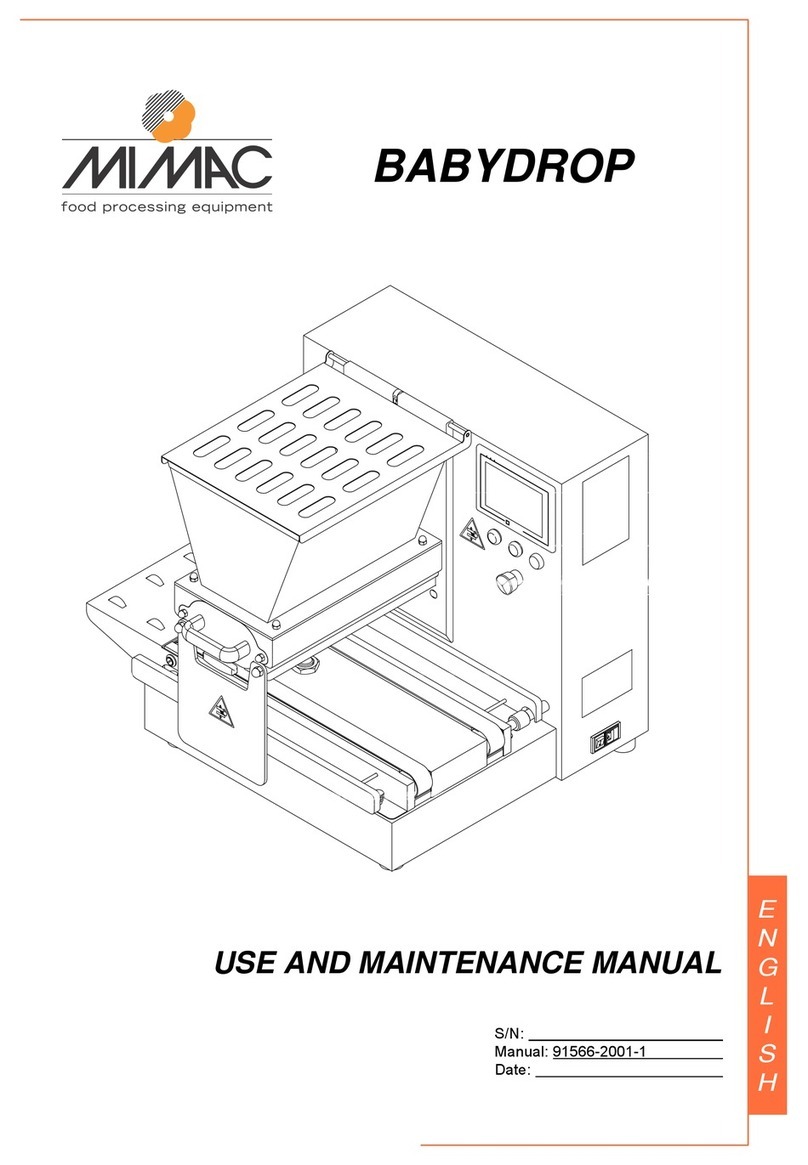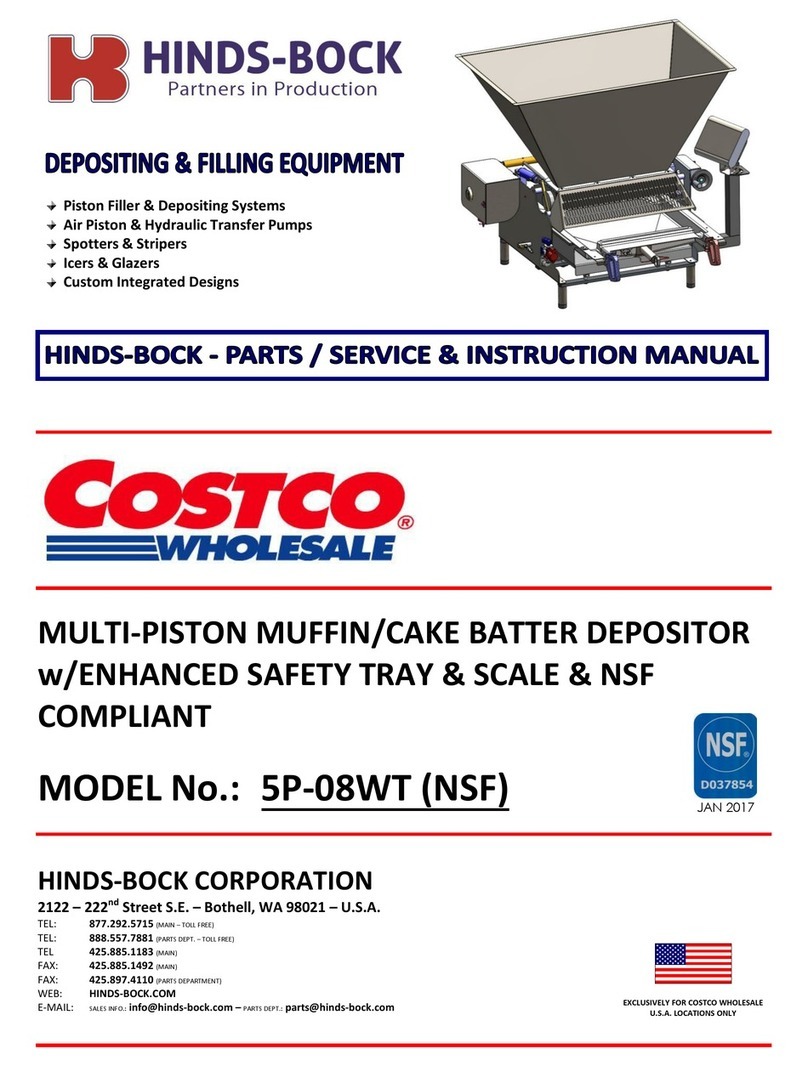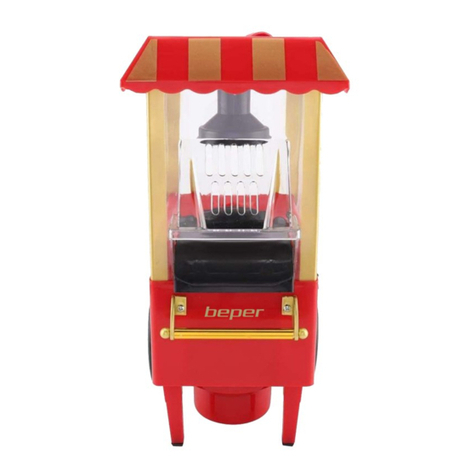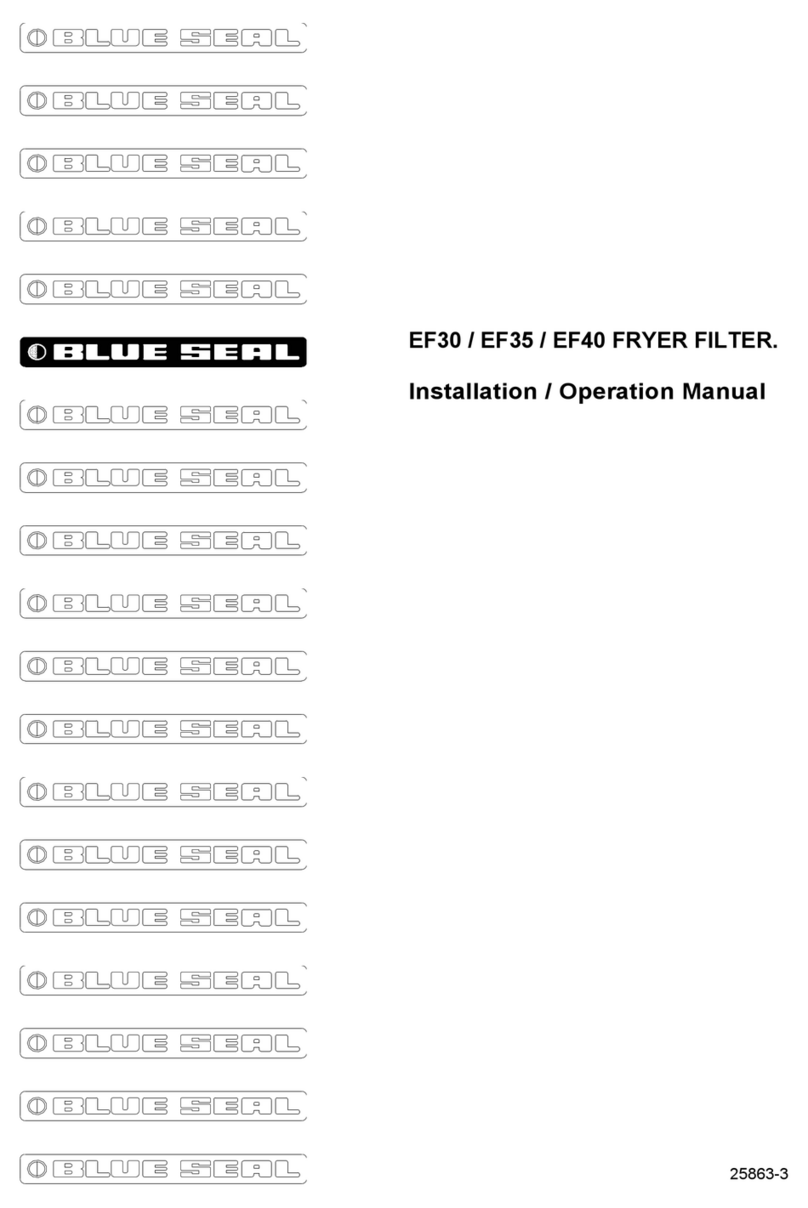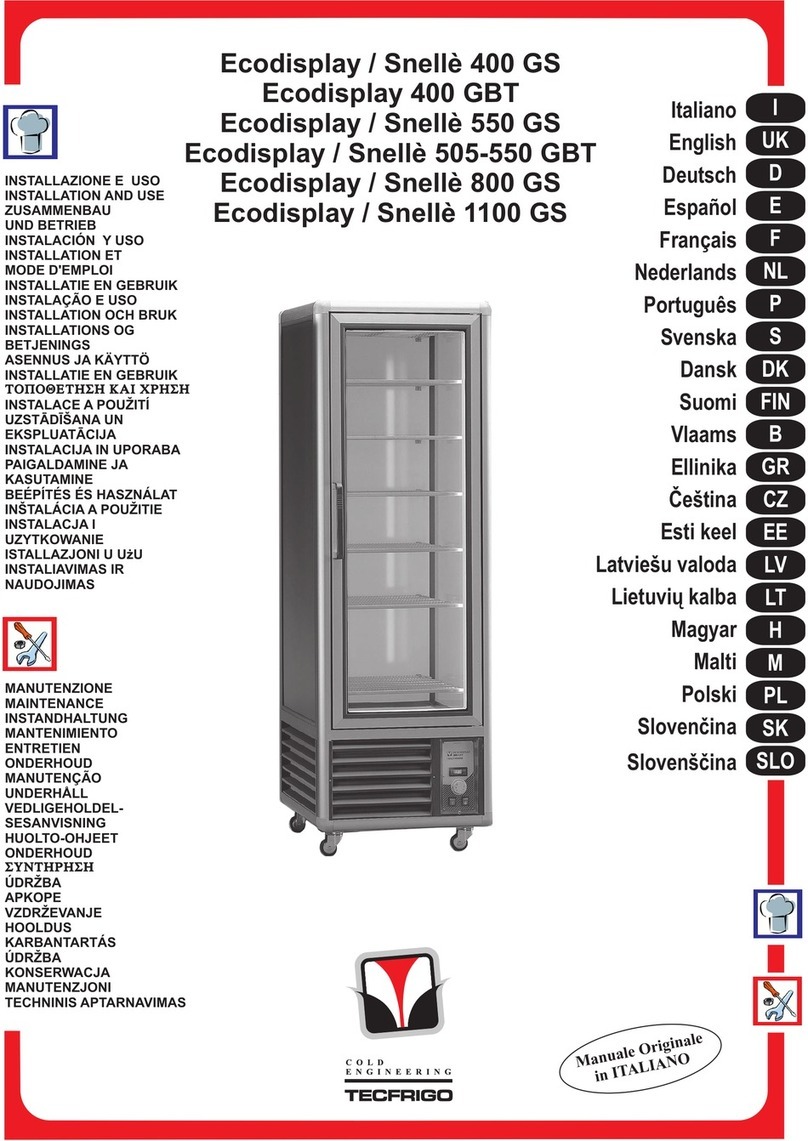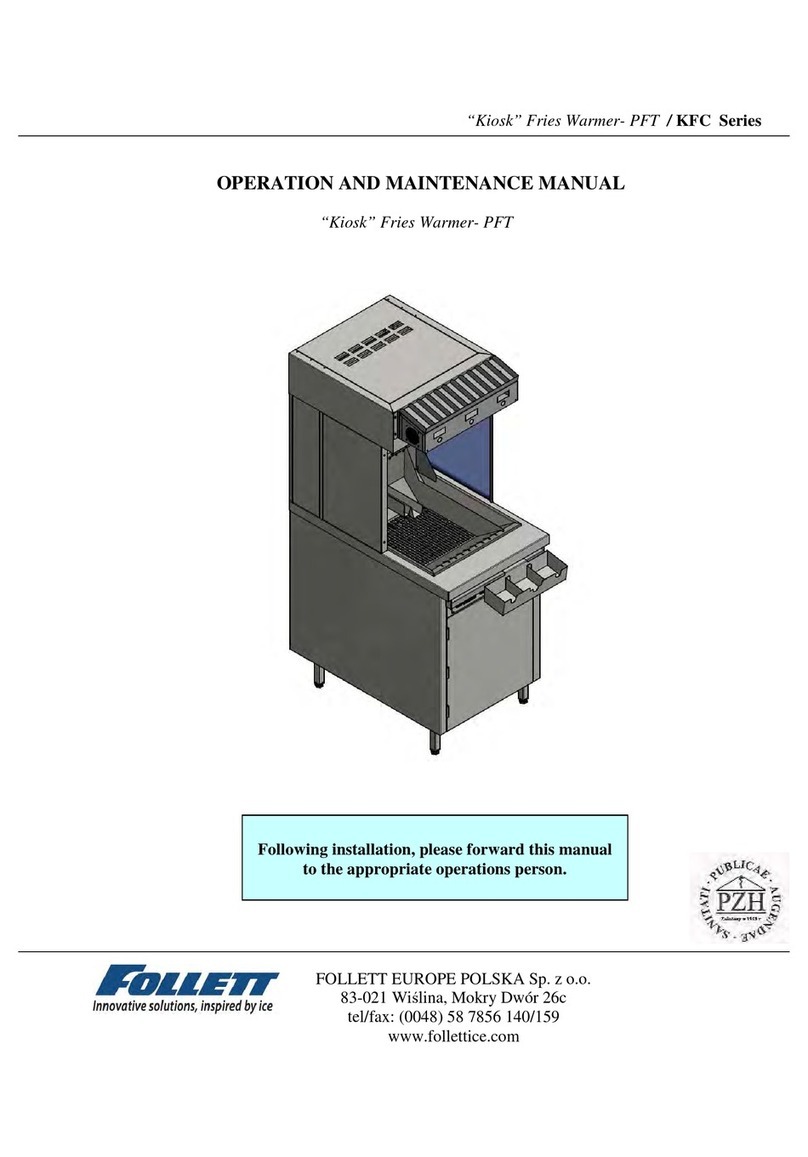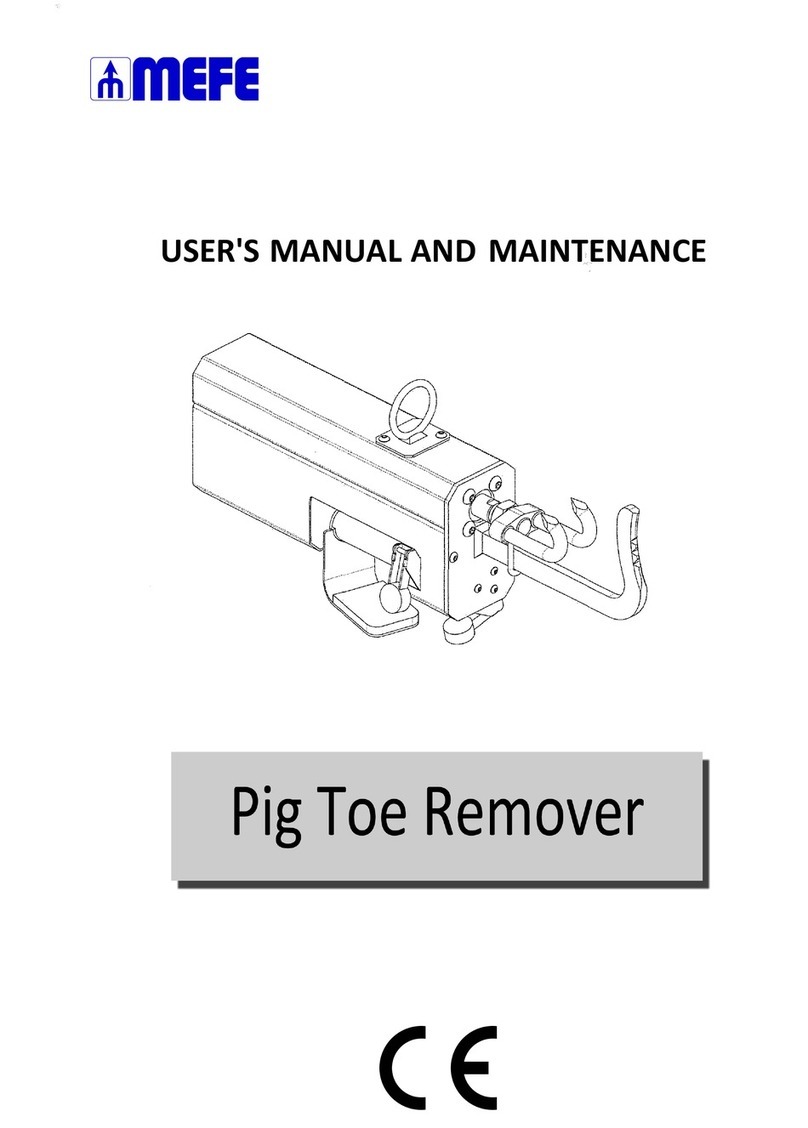MIMAC SUPREMA PLUS User manual

SUPREMA PLUS
SUPREMA
MINIDROP PLUS
MINIDROP
E
N
G
L
I
S
H
USE AND MAINTENANCE MANUAL
S/N:
Date:
Rev.:
R2


USE AND MAINTENANCE MANUAL
1
INDEX
1. INTRODUCTION ......................................................................................................................................................5
1.1. OWNERSHIP OF THE MANUAL.......................................................................................................................5
1.2. PURPOSE OF THE MANUAL ...........................................................................................................................5
1.3. VALIDITY OF THE MANUAL.............................................................................................................................5
1.4. SYMBOLISM......................................................................................................................................................5
1.5. IMPORTANCE OF THE MANUAL.....................................................................................................................5
1.6. INTENDED AUDIENCE.....................................................................................................................................5
1.7. PRESERVATION OF THE MANUAL.................................................................................................................5
2. PRELIMINARY INFORMATION...............................................................................................................................6
2.1. MANUFACTURER DETAILS.............................................................................................................................6
2.2. CUSTOMER SERVICE......................................................................................................................................6
2.3. EC STANDARDS COMPLIANCE DECLARATION............................................................................................6
2.4. NORMATIVE REFERENCES............................................................................................................................6
2.5. GUARANTEE.....................................................................................................................................................6
2.6. SOFTWARE OWNERSHIP................................................................................................................................6
2.7. PREPARATION OF THE WORK PLACES........................................................................................................7
2.8. RECEIVING THE MACHINE..............................................................................................................................7
2.8.1. PACKAGING...............................................................................................................................................7
2.8.2. LIFTING AND HANDLING...........................................................................................................................7
2.8.3. UNPACKING...............................................................................................................................................7
2.9. USERS TRAINING.............................................................................................................................................8
2.10. TERMS OF USE..............................................................................................................................................8
2.11. INTENDED USE ..............................................................................................................................................8
2.12. NOISE WARNINGS.........................................................................................................................................9
2.13. CLOTHING.......................................................................................................................................................9
3. SAFETY..................................................................................................................................................................10
3.1. GENERAL INFORMATION..............................................................................................................................10
3.2. DESCRIPTION OF PICTOGRAMS .................................................................................................................10
3.3. DESCRIPTION OF SAFETY DEVICES...........................................................................................................11
3.3.1. FIXED GUARDS........................................................................................................................................11
3.3.2. MOVABLE GUARDS.................................................................................................................................11
3.4. PLACEMENT OF SECURITY DEVICES AND SIGNALS................................................................................11
3.4.1. SUPREMA / SUPREMA PLUS..................................................................................................................11
3.4.2. MINIDROP / MINIDROP PLUS.................................................................................................................12
3.5. RESIDUAL RISKS ...........................................................................................................................................12
4. MACHINE DESCRIPTION .....................................................................................................................................13
4.1. GENERAL DESCRIPTION ..............................................................................................................................13
4.2. IDENTIFICATION.............................................................................................................................................13
4.3. TECHNICAL SPECIFICATIONS......................................................................................................................13
4.3.1. SUPREMA / SUPREMA PLUS..................................................................................................................13
4.3.2. MINIDROP / MINIDROP PLUS.................................................................................................................14

2
www.mimac.com
4.4. MAIN COMPONENTS.....................................................................................................................................15
4.5. EQUIPMENT ...................................................................................................................................................15
4.6. WORKING AREAS..........................................................................................................................................16
4.6.1. SUPREMA / SUPREMA PLUS.................................................................................................................16
4.6.2. MINIDROP / MINIDROP PLUS.................................................................................................................16
4.7. PRODUCTS OVERVIEW................................................................................................................................17
5. START-UP AND OPERATION CHECKS..............................................................................................................18
5.1. POSITIONING.................................................................................................................................................18
5.2. ELECTRICAL CONNECTION TO POWER SUPPLY AND EARTH................................................................18
5.3. CONTROL DESCRIPTION..............................................................................................................................18
5.3.1. CONTROL PANEL....................................................................................................................................18
5.3.2. MAIN SWITCH..........................................................................................................................................19
5.3.3. TOUCH SCREEN PANEL.........................................................................................................................19
5.4. PRELIMINARY OPERATIONS........................................................................................................................20
5.4.1. INSERTING THE ROLLER TYPE DOSING UNIT....................................................................................20
5.4.2. INSERTING THE PUMP TYPE DOSING UNIT........................................................................................21
5.4.3. INSERTING THE MOULD ........................................................................................................................22
5.4.4. INSERTING AND ADJUSTING THE WIRE CUTTING SYSTEM .............................................................23
5.4.5. INSERTING/REPLACING THE STEEL WIRE..........................................................................................24
5.5. CHECKING THE SAFETY DEVICES..............................................................................................................26
5.5.1. SUPREMA / SUPREMA PLUS.................................................................................................................26
5.5.2. MINIDROP / MINIDROP PLUS.................................................................................................................27
6. MACHINE USE ......................................................................................................................................................28
6.1. SELECTING A PROGRAM .............................................................................................................................28
6.2. CREATING/MODIFYING A PROGRAM..........................................................................................................28
6.3. DESCRIPTION OF PRODUCT PARAMETERS..............................................................................................29
6.4. COPYING A PROGRAM.................................................................................................................................31
6.5. MODIFYING PARAMETERS DURING OPERATION .....................................................................................31
6.6. PROTECTING PROGRAMS WITH A PASSWORD........................................................................................32
6.6.1. ENABLING AND DISABLING THE USER PASSWORD..........................................................................32
6.6.2. MODIFYING THE USER PASSWORD.....................................................................................................32
6.7. PROGRAM BACKUP/RESTORE....................................................................................................................33
6.8. PROGRAMMING EXAMPLES ........................................................................................................................33
6.8.1. FIXED PRODUCT.....................................................................................................................................33
6.8.2. LONG PRODUCT .....................................................................................................................................34
6.8.3. DROP SHAPED PRODUCT.....................................................................................................................34
6.8.4. FIXED PRODUCT IN SET STEPS ...........................................................................................................35
6.8.5. LONG PRODUCT IN SET STEPS............................................................................................................35
6.8.6. SPONGE CAKE........................................................................................................................................36
6.8.7. FIXED PRODUCT WITH ROTATION.......................................................................................................36
6.8.8. LONG PRODUCT WITH ROTATION .......................................................................................................37
6.8.9. DONUT .....................................................................................................................................................37
6.8.10. FIXED PRODUCT IN SET STEPS WITH ROTATION............................................................................38
6.8.11. FIXED PRODUCT WITH WIRE-CUTTING.............................................................................................38
6.8.12. LONG PRODUCT WITH WIRE-CUTTING .............................................................................................39
6.8.13. BRAID WITH WIRE-CUTTING ...............................................................................................................39
6.8.14. MULTILAYER FIXED PRODUCT...........................................................................................................40
6.8.15. MULTILAYER LONG PRODUCT............................................................................................................40

USE AND MAINTENANCE MANUAL
3
6.8.16. FLAME-SHAPED PRODUCT..................................................................................................................41
6.8.17. MULTILAYER FIXED PRODUCT WITH ROTATION..............................................................................42
6.8.18. MULTILAYER LONG PRODUCT WITH ROTATION ..............................................................................43
6.8.19. FLAME-SHAPED PRODUCT WITH ROTATION....................................................................................44
6.9. WARNINGS ON PROGRAMMING..................................................................................................................45
6.10. STARTING PRODUCTION............................................................................................................................45
6.10.1. PLACE THE DOUGH IN THE HOPPER.................................................................................................45
6.10.2. PRESSURISING THE SYSTEM .............................................................................................................46
6.11. MACHINE STOPPING DURING AN EMERGENCY......................................................................................46
7. SETUP AND DIAGNOSIS......................................................................................................................................47
7.1. MACHINE PARAMETERS...............................................................................................................................47
7.1.1. DESCRIPTION OF THE MACHINE PARAMETERS ................................................................................48
7.2. DIAGNOSTICS SCREEN ................................................................................................................................49
7.3. ALARMS AND SIGNALS.................................................................................................................................50
7.3.1. TABLE OVERTRAVEL ALARM: RESETTING INSTRUCTIONS..............................................................53
8. CLEANING.............................................................................................................................................................54
8.1. GENERAL INFORMATION..............................................................................................................................54
8.1.1. FOOD HYGIENE REQUIREMENTS.........................................................................................................54
8.1.2. CLEANING OF PARTS WHICH DO NOT COME INTO CONTACT WITH FOOD....................................54
8.1.3. CLEANING OF PARTS WHICH COME INTO CONTACT WITH FOOD...................................................54
8.2. STATIONARY MOULD DISASSEMBLING AND CLEANING..........................................................................55
8.3. ROTARY MOULD DISASSEMBLING AND CLEANING..................................................................................55
8.4. ROLLER TYPE DOSING UNIT DISASSEMBLING AND CLEANING .............................................................56
8.5. PUMP TYPE DOSING UNIT DISASSEMBLING AND CLEANING .................................................................57
9. MAINTENANCE .....................................................................................................................................................58
9.1. GENERAL INFORMATION..............................................................................................................................58
9.2. SUBJECT TO WEAR PARTS..........................................................................................................................58
9.3. STANDARD MAINTENANCE..........................................................................................................................58
9.4. SPECIAL MAINTENANCE...............................................................................................................................58
9.5. MAINTENANCE OF ELECTRICAL AND ELECTRONIC DEVICES ................................................................58
9.6. SPARE PARTS REQUEST..............................................................................................................................58
9.7. STORAGE........................................................................................................................................................58
9.8. DISMANTLING AND DISPOSAL.....................................................................................................................59

4
www.mimac.com

USE AND MAINTENANCE MANUAL
5
1. INTRODUCTION
1.1. OWNERSHIP OF THE MANUAL
This manual belongs exclusively to MIMAC ITALIA SRL.
Reproduction, even partial, is forbidden unless authorized by the Manufacturer.
1.2. PURPOSE OF THE MANUAL
The aim of this manual is to provide information necessary for the correct and safe use of the machine and for
carrying out operation as contemplated in the design phase.
1.3. VALIDITY OF THE MANUAL
This manual reflects the machine state of the art at the time it is placed on the market.
The Manufacturer reserves the right to make changes to the machine at any time and without notice.
Any integration sent by the Manufacturer to users must be kept together with the manual and becomes an integral
part of it.
1.4. SYMBOLISM
Useful information
Important communications regarding safety and caution when carrying out operations
Presence of risks and danger for health and safety
DPI use abligation
Notice regarding machine disposal and packaging elimination
1.5. IMPORTANCE OF THE MANUAL
This manual must be read before starting any operation. Good machine operation is guaranteed if all instructions
contained in this manual are applied correctly.
The machine must not be used and no intervention must be carried out on it before having read this manual
carefully and understood all its content.
It is also forbidden to use the machine for purposes other than those indicated, or to neglect operations that are
necessary for safety.
1.6. INTENDED AUDIENCE
Accident prevention and safety manager
Operators in charge of transporting the machine
Operators in charge of connection to the power source
Operators in charge of testing the machine
Operators in charge of the training
Machine operators
Operators in charge of maintenance
Operators in charge of machine disposal
1.7. PRESERVATION OF THE MANUAL
The manual must be kept in good condition and in a suitable place that is known to all machine users.
If the manual is lost, deteriorated or if additional copies are necessary, please contact the Manufacturer directly.
The manual must be kept until the machine is disposed of.
If the machine is sold, the manual must be delivered to the new owner together with the EC standards conformity
declaration and all other attachments.

6
www.mimac.com
2. PRELIMINARY INFORMATION
2.1. MANUFACTURER DETAILS
MIMAC ITALIA S.R.L.
Via dell'Industria, 22
36013 Piovene Rocchette (VI)
ITALIA
Tel.: +39 0445 576250
Fax: +39 0445 576112
2.2. CUSTOMER SERVICE
Machine assistance is supplied by the Manufacturer or the authorized Retailer.
Please contact the Manufacturer or the authorized Retailer for any request and refer to the indications printed on the
information plate of the machine.
2.3. EC STANDARDS COMPLIANCE DECLARATION
The machine indicated in the manual is manufactured in compliance with the relevant Community Directives that
were in force when the machine was placed on the market. As the machine is not included in Annex IV of the
2006/42/EC Machinery Directive, the Manufacturer has supplied self-certification for placing the “EC” marking
according to the reference directives.
2.4. NORMATIVE REFERENCES
Machinery Directive 2006/42/EC
Low Voltage Directive 2006/95/EC
Electromagnetic Compatibility Directive 2004/108/E
UNI EN ISO 12100:2010 - Safety of machinery - General principles for design - Risk assessment and risk
reduction.
UNI EN ISO 13850:2008 - Safety of machinery - Emergency stop - Principles of design.
UNI EN 1088:2008 - Safety of machinery - Interlocking devices associated with guards - Principles for
design and selection.
CEI EN 60204-1 - Safety of machinery. “Electrical equipment of machines”.
Regulation (CE) N. 1935/2004 of 27 October 2004
2.5. GUARANTEE
The machine is guaranteed for 12 months. The guarantee only covers those parts that present production faults and
excludes the electric installation and the motors. The indicated period is valid for a machine that works eight hours a
day and must be halved for heavier-duty conditions.
During the guarantee period the Manufacturer shall supply, free of charge, within the minimum technical periods,
and ex factory, the parts or items that have evident manufacturing faults, and only under the condition that the
machine was used following the regulations established by the Manufacturer (installation, use, maintenance and
performance limits).
Items not manufactured by MIMAC ITALIA are excluded from the guarantee, for example motors and electrical
apparatus, cylinders and pneumatic components, as well as all material not directly guaranteed by its own
manufacturer. In addition, all parts damaged during the transport, or because of bad and/or incorrect installation or
maintenance, or because of neglect or incorrect use, are not covered by the guarantee.
If the faulty parts are repaired or replaced in the premises of the customer, he will be charged with the cost of
travelling, board and lodging and of the working hours of the technicians sent to repair or replace the parts. The
hourly cost shall be quantified according to the Anima (Federation of the Italian Association of Mechanical and
Engineering Industries) tables in force at the moment of the intervention.
If in the unquestionable opinion of our technicians it is not possible to intervene in the customer’s premises, the
customer shall send the machine on DDP terms to MIMAC ITALIA who, after repairing the faulty part at no charge,
shall return the machine on ex works terms.
When the previously indicated guarantee period has expired, the customer will be also charged with both the cost of
the replaced parts and the cost of the labour.
The guarantee is valid only for the original purchaser; machine replacement is never foreseen.
The guarantee becomes null and void when the machine has been tampered with, or modified and/or repaired by
people who have not been expressly authorized by MIMAC ITALIA.
2.6. SOFTWARE OWNERSHIP
The implemented software, which runs machine operations, belongs to MIMAC ITALIA SRL having its legal head
office in Via dell'Industria, 22 - Piovene Rocchette (VI) - ITALY.
The Customer is licensed to use the software in compliance with the instructions in this manual.

USE AND MAINTENANCE MANUAL
7
The software cannot be altered, modified, copied and/or reproduced without written authorisation from MIMAC
ITALIA.
Being the owner of the software used to run its machines, MIMAC ITALIA will not grant the source codes of its
software for any reason and will persecute anyone or anything that copies, reproduces, decodes or modifies the
same software.
2.7. PREPARATION OF THE WORK PLACES
Unless otherwise indicated in the contract, the following must be carried out by the Customer:
preparation of the areas, including any building works and/or piping and conduit that are required;
the power supply for the machine, in compliance with the laws in force in the user’s country.
The installation area of the machine, being meant for production of oven-baked products, must have:
openings that allow the bulkiest parts of the machine to pass;
construction features that are in compliance with current standards;
an electric system that is in compliance with current standards; special care must be taken with the earthing
system and the main panel, which must have relative protection devices against overloads and short circuits.
The nominal power installed on the machine is indicated on the identification plate.
The complete electric system must be realized and kept periodically under control by professionally trained
technicians who can accompany each intervention with a declaration of conformity to “the rules of the trade”.
2.8. RECEIVING THE MACHINE
The Manufacturer is not liable for any accident, damage or machine fault that may occur if the
indications that follow are not observed.
Make sure no damage occurred during transport and that the packaging is whole. If this is not the case, inform the
shipping agent and write “Accepted with a reservation” on the shipping document.
If any damage is caused during transport, the shipping company must be informed by the Customer, in writing
within 8 days from receipt of the goods. Inform the Manufacturer immediately if serious damage has occurred.
Make sure the goods correspond to the items listed in the shipping document. Inform the Manufacturer immediately
if pieces are missing.
2.8.1. PACKAGING
The machine and its accessories can be delivered:
without packaging, fixed to the loading surface, only protected by an outer film to prevent scratches;
by container or in palletized wooden crates.
If transported by sea, the machine is inserted inside a sealed wrapping to protect it from atmospheric agents.
2.8.2. LIFTING AND HANDLING
All operations must be carried out by people who have been authorised and under the
supervision of a person in charge.
Operators must wear all the personal protection equipment necessary for the operations to
be carried out safely and must use suitable tools.
Before starting operations, identify and make sure there are no danger points in the movement area, including the
area where the means of transport is positioned and the installation area.
The transport and lifting means must be suitable for the weight to be lifted. Concerning this, read the weights printed
on the packaging and/or indicated in this manual.
Inspect the cables before using them to make sure there is no damage or signs of wear. Do not twist or knot the
cables and follow the Manufacturer’s instructions; these instructions are valid also for chains or belts.
Be careful when positioning the lifting or slinging systems; make sure the load is perfectly balanced before lifting it.
It is forbidden to get onto the load, or to move and/or remain under it while it is being moved.
It is forbidden, for those people who are not involved in transporting and moving, to access the relative areas.
All operators must remain at a safety distance from the packages when they are lifted from the ground to avoid
being hit if they fall.
Do not allow the load to oscillate during lifting.
Lift the machine using a fork-lift, inserting the forks under the lower surface at the baricentre point
Position the machine on a solid and even floor/worktop.
2.8.3. UNPACKING
When installation has been completed, all the packaging material must be disposed of in compliance with the
national regulations in force.
The equipment and material used for lifting should be positioned in a suitable place and stored carefully for possible
machine transfer.

8
www.mimac.com
2.9. USERS TRAINING
The machine was designed and manufactured for professional use. Those who use the machine must be trained in
order to become familiar with:
all the functions of the control panel;
all the installed protection guards and safety systems;
commissioning and putting out of service;
the possible work cycles;
the various machine stop devices, including the emergency stops;
loading the material to be processed;
unloading the processed material;
the contents of this Manual;
the checks to be carried out periodically;
all the routine maintenance operations.
Operators must also avoid doing anything on their own initiative; they do not have to carry out any interventions that
are outside their competence and technical knowledge
If something wrong occurs the operators have to:
intervene immediately and stop the machine, using the emergency push-button;
immediately inform their supervisor, and request his timely presence.
When the training phase is completed, operators must undergo an evaluation test on their acquired level of
awareness. The training phase and the result of the aptitude test must be documented within the company.
The machine must not be used by people who have not been declared legally suitable for
handling food products.
2.10. TERMS OF USE
Permitted environmental values for good machine operation:
temperature from +5 °C to +40 °C with an average not exceeding 35 °C over 24 hours;
relative humidity between 30% and 95% (without condensation);
absence of ionising and non-ionising radiation.
The environment around the machine must be kept clean. Remove the plug from the mains before moving the
machine for cleaning.
The workplace lightning must:
guarantee good visibility at every point;
not create dangerous reflections;
allow for the control panel and the emergency push-buttons to be read clearly.
2.11. INTENDED USE
MIMAC ITALIA is not liable for any injury caused to people or damage to things arising from any unauthorised
changes made to the original operation software granted in use to the Customer.
It is forbidden to use the machine in conditions or for purposes other than those indicated in the manual and MIMAC
ITALIA cannot be held responsible for faults or accidents caused by the non-observance of this rule.
Do not use the machine if the safety devices have been tampered with: before starting to work, the operator must
make sure that the safety devices, such as the emergency push-button and the micro-switches connected to the
mobile guards, are working correctly.
Do not hit the safety guards or place weights on them: even though the machine has solid guards, these are not
suitable for holding heavy weights or being hit hard.
Machine must not be used by unskilled users: this manual must be read carefully before starting to work with the
machine.
Do not direct jets of water directly towards the machine, especially towards the guards and the electrical and
electronic parts, while washing the machine and the workplace.
The Manufacturer is not liable for damage if one of the following conditions occurs:
incorrect installation;
power supply faults;
failure to comply with the instructions;
incorrect machine use or machine used by unskilled users;
using the machine in a manner that is not indicated in national regulations;
negligent maintenance operations;
unauthorised modifications or interventions;
using spare parts that are not original or not specific for the model.

USE AND MAINTENANCE MANUAL
9
To guarantee maximum working reliability, MIMAC ITALIA has accurately chosen the materials and components
used to produce the apparatus, which was accurately tested before delivery. Good machine performance over time
also depends on correct use and suitable maintenance in line with the instructions given in this manual.
2.12. NOISE WARNINGS
The dropping machine does not exceed an equivalent continuous noise level of 85 dB(A).
Considerations in compliance with Directive 2006/42/CE P.1.7.4.f
No special precaution must be taken by the operator.
The indicated noise level is an emission level and does not necessarily represent a safe working level.
There is a link between the emission and exposure levels, but it cannot be used to determine if special precautions
are necessary. Factors that influence the true level of exposure of the work force include the characteristics of the
working environment, the other sources of noise, etc., for example the number of machines and the other processes
close by. In addition, the permitted exposure level can vary from one country to another. This information allows the
machine user to evaluate the danger and risks in a better manner.
The machine user and the employer must respect laws regarding operator protection against the daily personal
exposure to noise, with the possible use of personal protection equipment (earmuffs, etc.) according to the total
noise level present in the work area.
2.13. CLOTHING
As far as clothing is concerned, operators must adhere to food production standards that are current in the
European community and/or in their own Country.
In a simple manner, it is obligatory to:
wear clothing that is in compliance with health regulations (overalls and headgear that cover hair completely);
wear disposable sterilized gloves;
wear accident-prevention footwear that is suitable for the movements to be carried out;
wear disposable masks that cover the mouth and nose.

10
www.mimac.com
3. SAFETY
3.1. GENERAL INFORMATION
The machine was designed to work safely. All commands are given using a touchscreen panel and the push-button
present on the control panel.
The emergency push-button inhibits all machine functions; to reset them release the emergency push-button and
press the re-establishment push-button. No component will start moving before the emergency push-button is
released.
The stability of the whole machine is sufficient to guarantee use in the indicated operating conditions without risks of
overturning, falling or moving unexpectedly.
Do not tamper with or eliminate the safety devices that are installed on the machine.
Periodically check the effectiveness of the safety systems.
Do not damage or eliminate the safety signals that are applied to the machine; if a safety signal is damaged or
missing, immediately inform the person in charge of company safety and ask for its replacement.
If operators tamper with the safety devices, the Manufacturer is not liable for any resulting injury to people or
damage to things. The operator becomes the only person responsible when facing competent bodies.
If danger arises for people or things, press the emergency push-button.
3.2. DESCRIPTION OF PICTOGRAMS
ATTENTION! Machine moving parts in action
BE CAREFUL to your hands
DO NOT remove safety devices
DO NOT clean, grease or adjust the machine elements
while they are in action
DO NOT clean the machine using water jets
ATTENTION! Hand crush hazard

USE AND MAINTENANCE MANUAL
11
3.3. DESCRIPTION OF SAFETY DEVICES
3.3.1. FIXED GUARDS
They are fixed with screws and can be removed only using the appropriate tools, which must only be used for
maintenance operations; when maintenance is finished the guards must be correctly repositioned.
3.3.2. MOVABLE GUARDS
They are connected to safety micro-switches or photocells meant for cutting in automatically whenever the covers
are opened. The machine can start production again when the movable guards are closed.
3.4. PLACEMENT OF SECURITY DEVICES AND SIGNALS
3.4.1. SUPREMA / SUPREMA PLUS
1. Hopper movable guard
2. Wire-cut device movable guard
3. Front guard
4. Photocell
5. Main pictogram
6. Pictogram “Hand crush hazard”
7. Information plate
1
4
7
3
2
6
6
5
5
6

12
www.mimac.com
3.4.2. MINIDROP / MINIDROP PLUS
1. Hopper movable guard
2. Front guard
3. Photocell
4. Main pictogram
5. Pictogram “Hand crush hazard”
6. Information plate
3.5. RESIDUAL RISKS
While using the machine for production or maintenance, the residual risks present are possible crushing of the
hands between the die and the conveyor or between the die and the tray positioned above the conveyor.
1
2
6
3
3
5
5
4
5
5

USE AND MAINTENANCE MANUAL
13
4. MACHINE DESCRIPTION
4.1. GENERAL DESCRIPTION
Extremely flexible dropping machine for the production of cookies and pastry in general.
Thanks to its interchangeable dosing units and several moulds with nozzles, the dropping machine allows many
great flexibility in the typology of product and in the choice of the shape.
4.2. IDENTIFICATION
In each machine there is an identification plate containing information about the Manufacturer and the machine
(model name, serial number, power supply, year of manufacture).
4.3. TECHNICAL SPECIFICATIONS
4.3.1. SUPREMA / SUPREMA PLUS
SUPREMA 400
SUPREMA PLUS 400
SUPREMA 450
SUPREMA PLUS 450
Dimensions
A
B
H
1110 mm
895 mm
1360 mm
1110 mm
895 mm
1360 mm
Weight
240 kg
245 kg
Hopper capacity
24 lt
27 lt
Power supply
200-240 V - 50/60 Hz - 1ph
Tray size
400x600 mm
450x660 mm
H
A
B
A
B

14
www.mimac.com
4.3.2. MINIDROP / MINIDROP PLUS
MINIDROP 400
MINIDROP PLUS 400
MINIDROP 450
MINIDROP PLUS 450
Dimensioni
A
B
H
840 mm
1110 mm
1360 mm
890 mm
1110 mm
1360 mm
Peso
190 kg
195 kg
Capacità tramoggia
24 lt
27 lt
Alimentazione
200-240 V - 50/60 Hz - 1ph
Dimensione teglie
400x600 mm
450x660 mm
A
B
H

USE AND MAINTENANCE MANUAL
15
4.4. MAIN COMPONENTS
1 - Frame
The frame is made of steel, aluminum alloy and stainless steel, covered by stainless steel panels that are fast and
easy to clean and sanitize.
2 - Conveyor
The conveyor allows the tray to move forwards or backward for an accurate placement and for moving while the
machine is dropping. The conveyor makes also vertical movement to detach the product from the nozzles and to
adjusts the thickness of the products.
3 - Dosing unit
The dosing unit drops the dough put into the hopper. The machine can be equipped with two different type of dosing
unit:
roller type to handle soft dough (e.g. meringues and éclairs) or harder dough (e.g. shortbread of almond
dough);
pump type to handle fluid dough or semi-dense dough (e.g. sponge cake or cup cake).
4 - Wire-cut device
The wire-cut device allows dosing of harder doughs in the desired thickness. Cutting is achieved by means of a
steel wire fixed to a frame; the latter moves, making the wire rub against the plastic patterns that are placed on the
die.
5 - Die
The die, complete with nozzles, gives the wanted shape to the products.
6 - Control panel
The control panel allows the operator to interface with the machine using the buttons and the touch screen control
panel.
4.5. EQUIPMENT
The machine can be provided with different dosing units, moulds and nozzles in accordance with the need of the
customer agreed at the time of the order. The standard equipment includes a kit of service wrenches.
1
5
3
2
4
1
2
3
6
5
6

16
www.mimac.com
4.6. WORKING AREAS
4.6.1. SUPREMA / SUPREMA PLUS
Normal running direction
The machine can be used by one operator only, who fills the hopper, feeds the trays and removes them.
1. Hopper filling area
2. Tray feeding area
3. Tray removing area and control panel
4.6.2. MINIDROP / MINIDROP PLUS
Normal running direction
The machine can be used by one operator only, who fills the hopper, feeds the trays and removes them.
1. Hopper filling area
2. Tray feeding area
3. Tray removing area and control panel
1
2
3
1
2
3

USE AND MAINTENANCE MANUAL
17
4.7. PRODUCTS OVERVIEW
The machine can make many type of products set by default. By choosing one of the products available the system
loads specific parameters.
Available products may differ depending on the model and options included.
Fxed product
Long product
Drop shaped product
Fixed product in set steps
Long product in set steps
Sponge cake
Fixed product with rotation
Long product with rotation
Donut
Fixed product with rotation in set steps
Fixed product with wire-cutting(1)
Long product with wire-cutting(1)
Braid with wire-cutting(1)
Multilayer fixed product(2)
Multilayer long product(2)
Flame shaped product(2)
Multilayer fixed product with rotation(2)
Multilayer long product with rotation(2)
Flame shaped product with rotation(2)
(1) Available on SUPREMA and SUPREMA PLUS models only
(2) Available on MINIDROP PLUS and SUPREMA PLUS models only

18
www.mimac.com
5. START-UP AND OPERATION CHECKS
5.1. POSITIONING
The floor and/or supports on which the machine is positioned must be suitable for supporting the indicated weights.
Make sure enough space is left around the perimeter of the machine for using and carrying out maintenance on it
safely.
When choosing the machine position, please consider these points:
the machine size;
the operator's working areas, the space necessary for loading / unloading the trays and the space necessary
for accessing the control panel;
the movements necessary for cleaning the work station and the machine;
the space necessary for carrying out maintenance.
5.2. ELECTRICAL CONNECTION TO POWER SUPPLY AND EARTH
The Customer is always in charge of, and responsible for connecting the machine to the
electric power supply. The Customer is also responsible for power conductor protection and
creating a suitable and reliable earthing system.
The installing electrician must be specialised in work of this type. He/She must also be aware of all the technical
notions and regulations for working in a professional manner.
The machine must be connected to the electric power system of the installation premises in compliance with
standards (IEC-EN6 0204-I,IEC-EN 60349-I).
The power cable must be kept distant from parts that are hot, that can cut, or that move. It must also not obstruct
operator and material movements in the installation area.
Make sure the machine voltage indicated on the identification plate corresponds to the line voltage of the laboratory;
if it does not, DO NOT connect the machine to the power supply, instead contact the Retailer or Manufacturer
immediately.
The machine must be connected to an earthing system which must be prepared by the Customer in compliance
with what is indicated in current standards (LD 547/55 - IEC EN 60204-1 EN60445).
The connecting clamps are prepared inside the electric panel as specified in the attached wiring diagrams. Use the
statutory earthing system, not pipes for gas, water or other unspecified metal holders.
5.3. CONTROL DESCRIPTION
5.3.1. CONTROL PANEL
Operators have the control panel at their disposal, which can be used to carry out operations for setting up and
controlling the machine.
The operator has a stop push-button to stop the machine, in addition to an emergency stop push-button and safety
devices on the safety guards. Press the stop push-button to stop production temporarily. In danger situations, use
the emergency stop push-button to immediately stop the machine.
1
3
2
4
6
5
This manual suits for next models
3
Table of contents
Other MIMAC Commercial Food Equipment manuals
Popular Commercial Food Equipment manuals by other brands
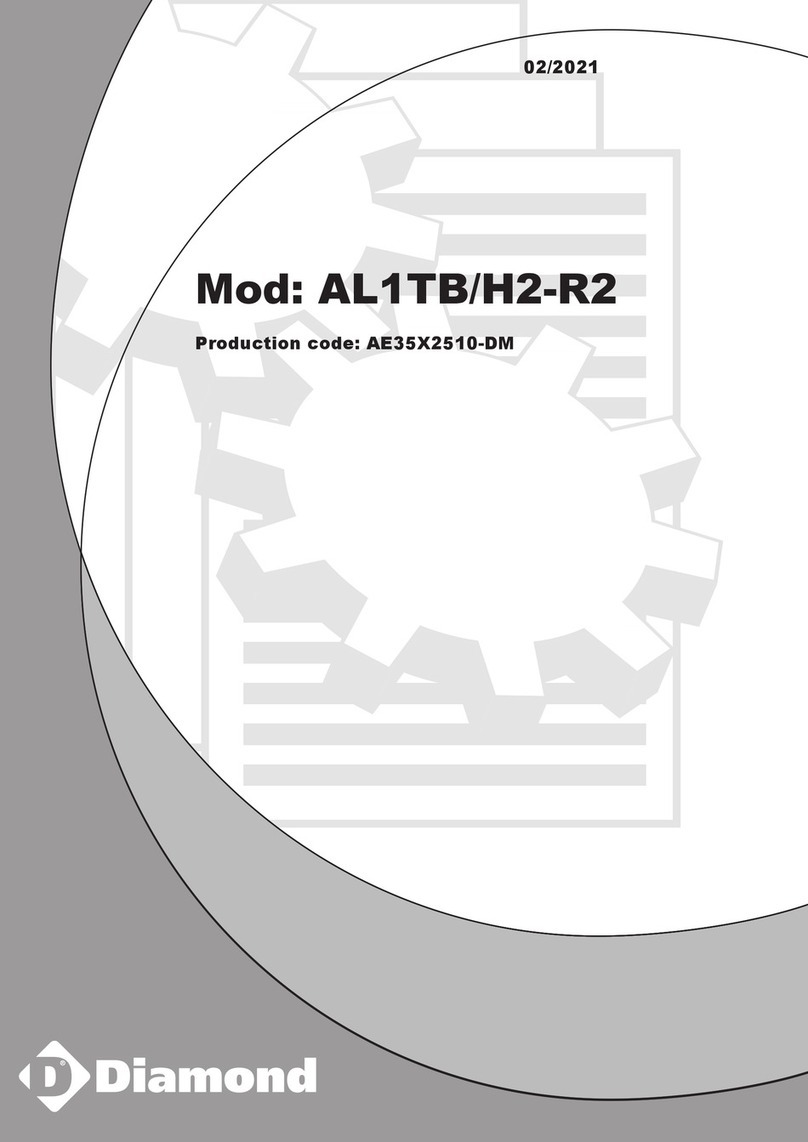
Diamond
Diamond AL1TB/H2-R2 Installation, Operating and Maintenance Instruction
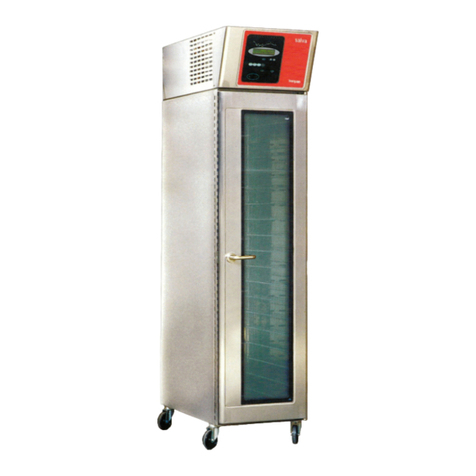
Salva
Salva IVERPAN FC-18 User instructions
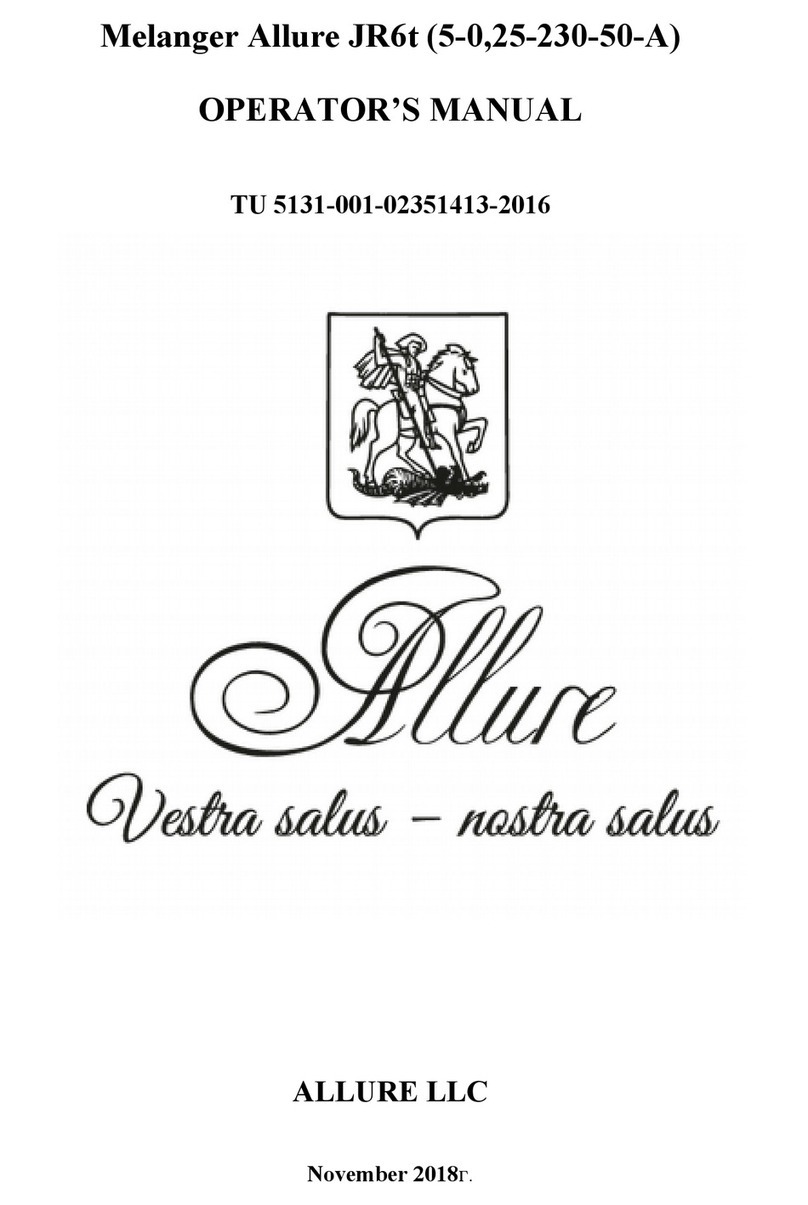
Allure
Allure Melanger JR6t Operator's manual
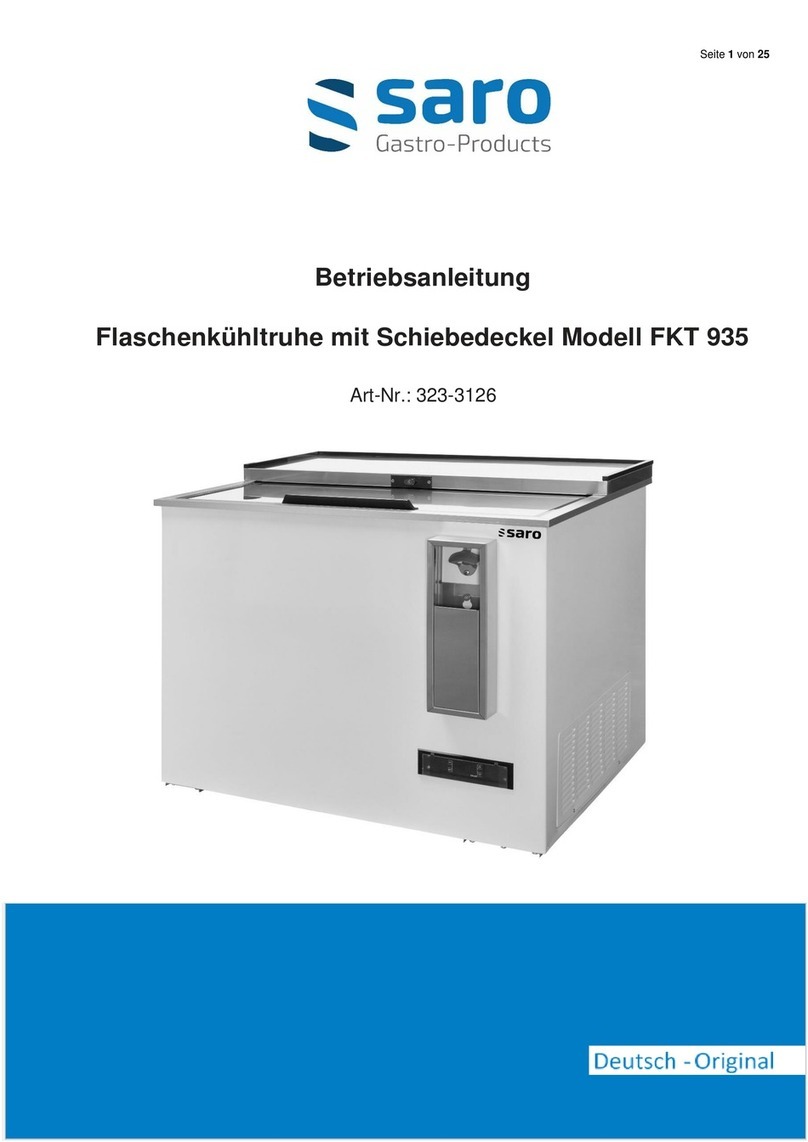
saro
saro FKT 935 operating instructions
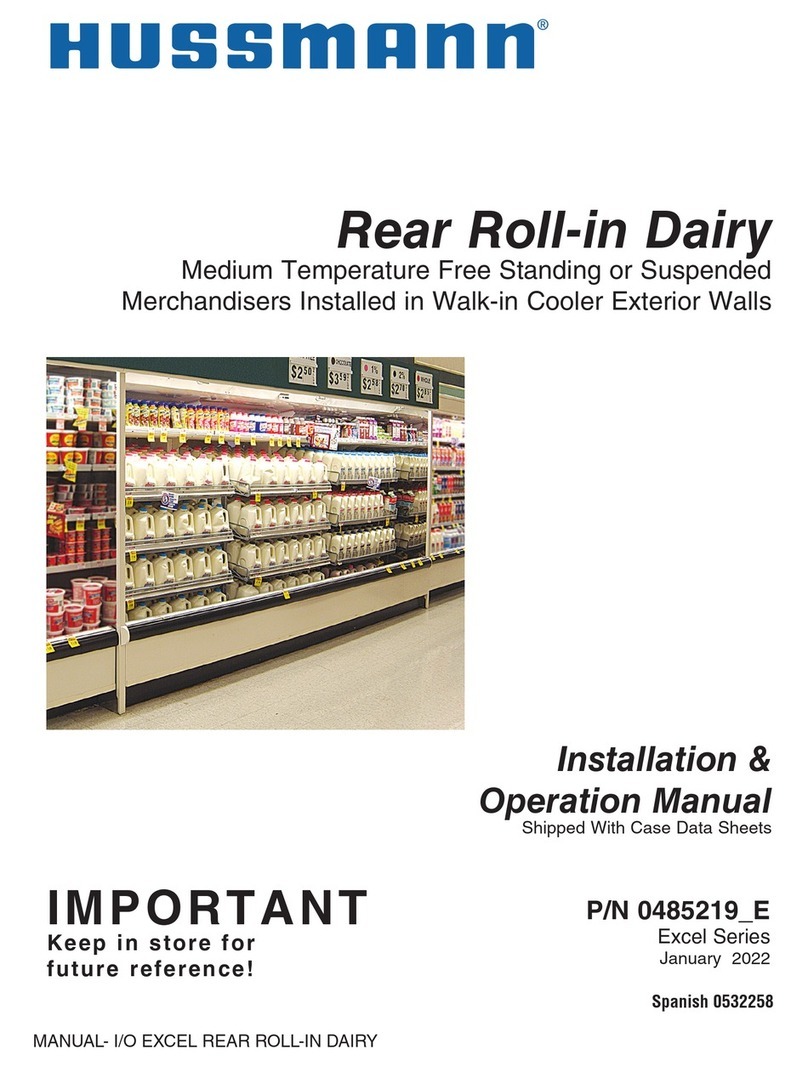
Hussmann
Hussmann Rear Roll-in Dairy Installation & operation manual
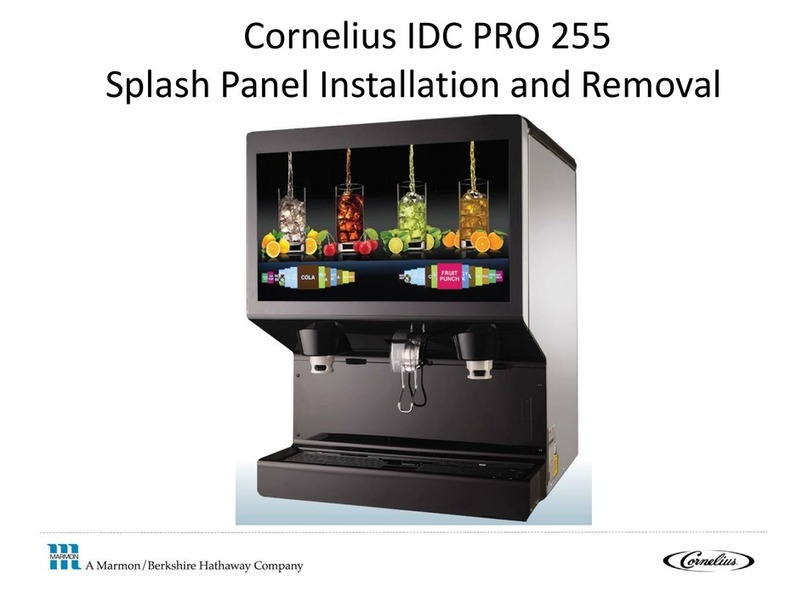
Cornelius
Cornelius IDC PRO 255 Service manual
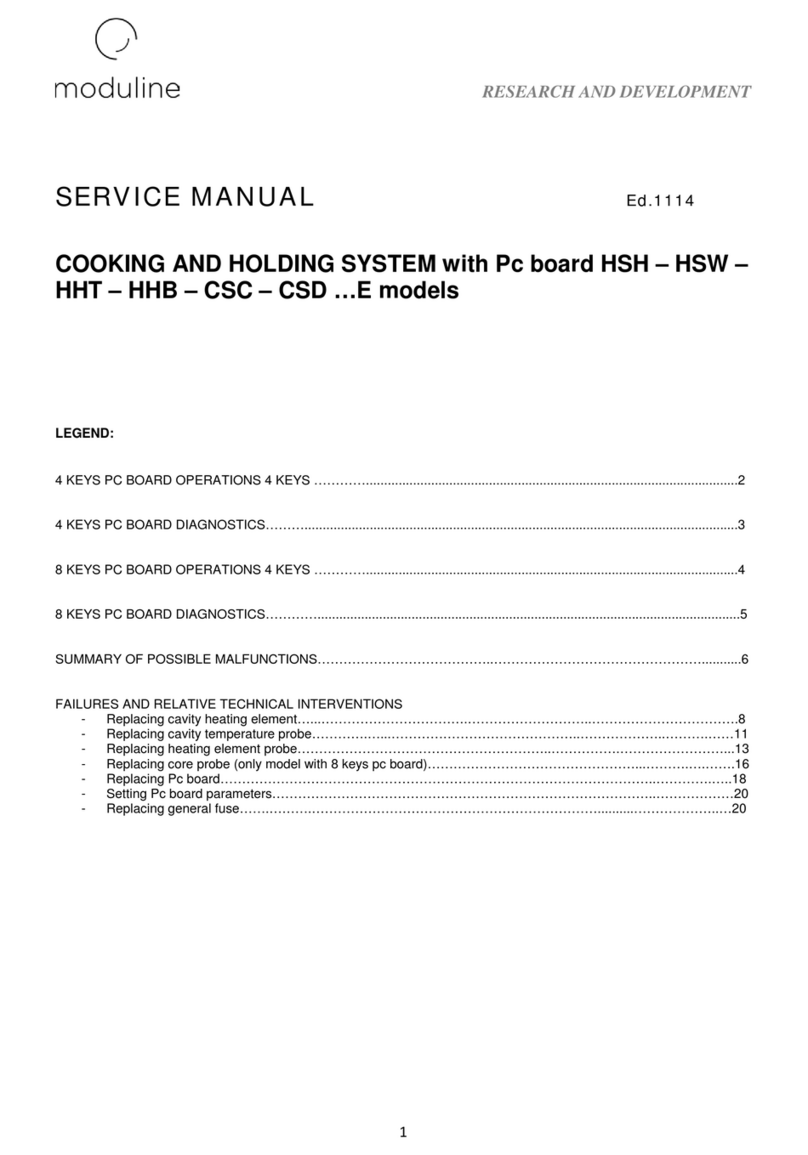
Moduline
Moduline HSH E Series Service manual
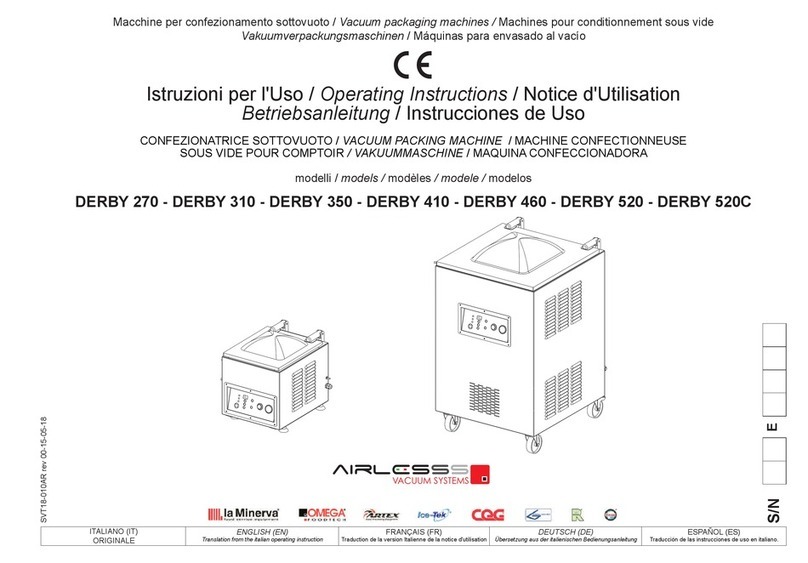
MINERVA OMEGA
MINERVA OMEGA DERBY 270 operating instructions
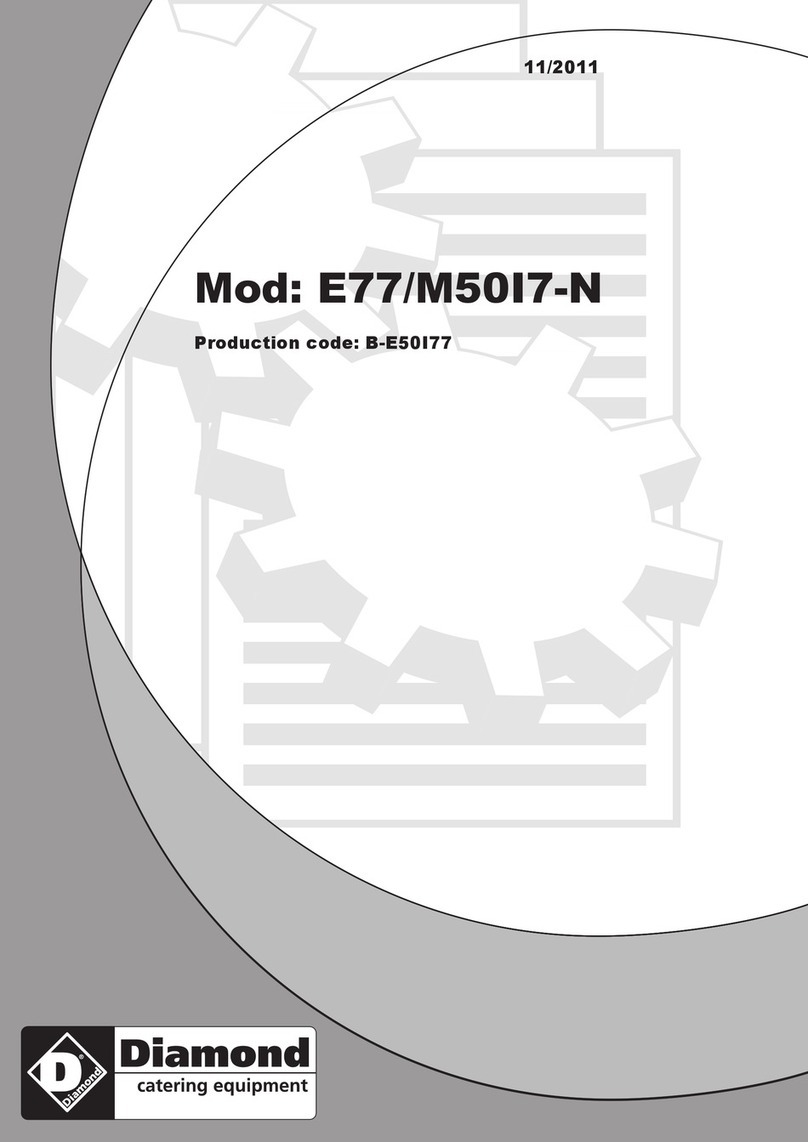
Diamond
Diamond OPTIMA 700 Installation, use and maintenance instructions
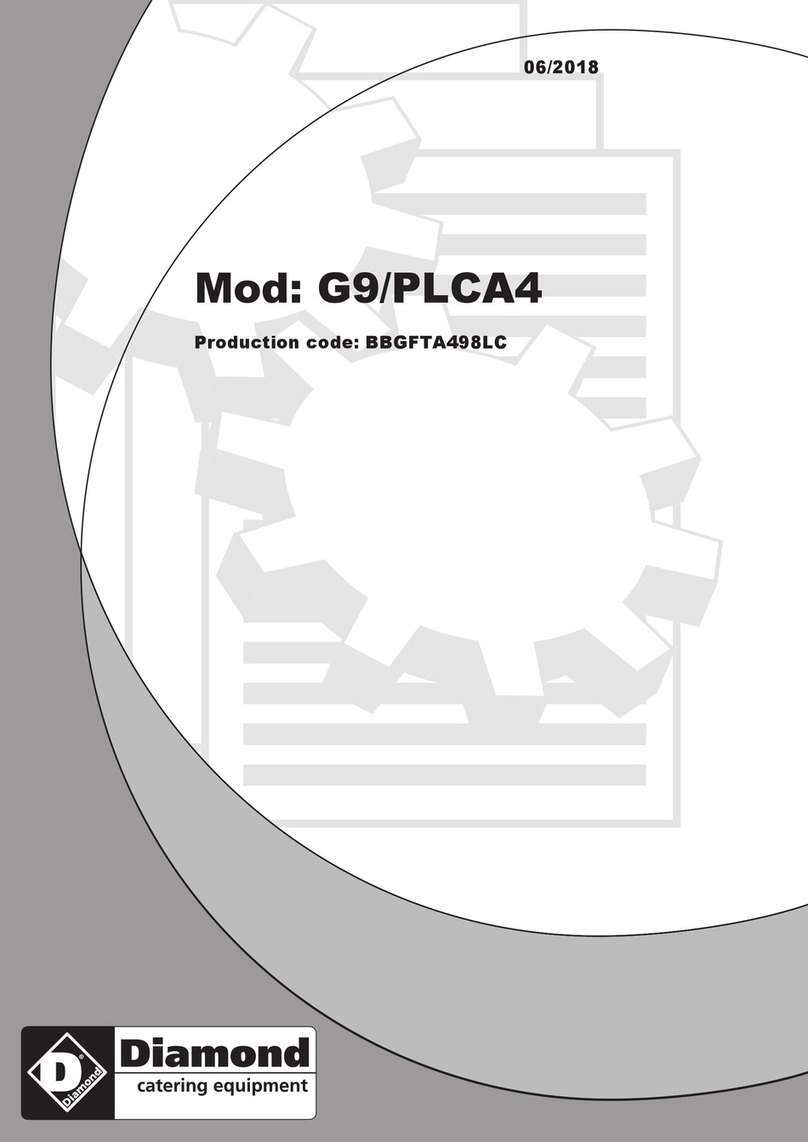
Diamond
Diamond G9/PLCA4 operating instructions
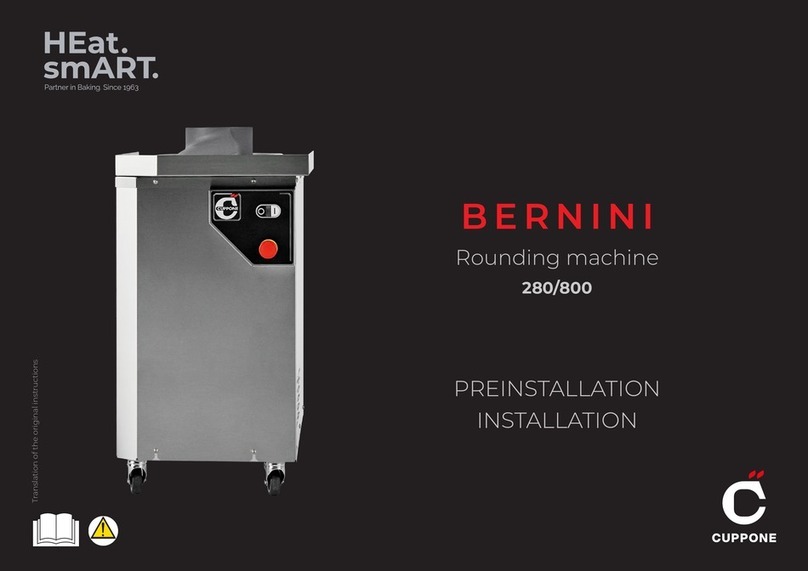
Cuppone
Cuppone BERNINI BRN 280 Installation

Arneg
Arneg Atlanta Direction for Installation and Use
